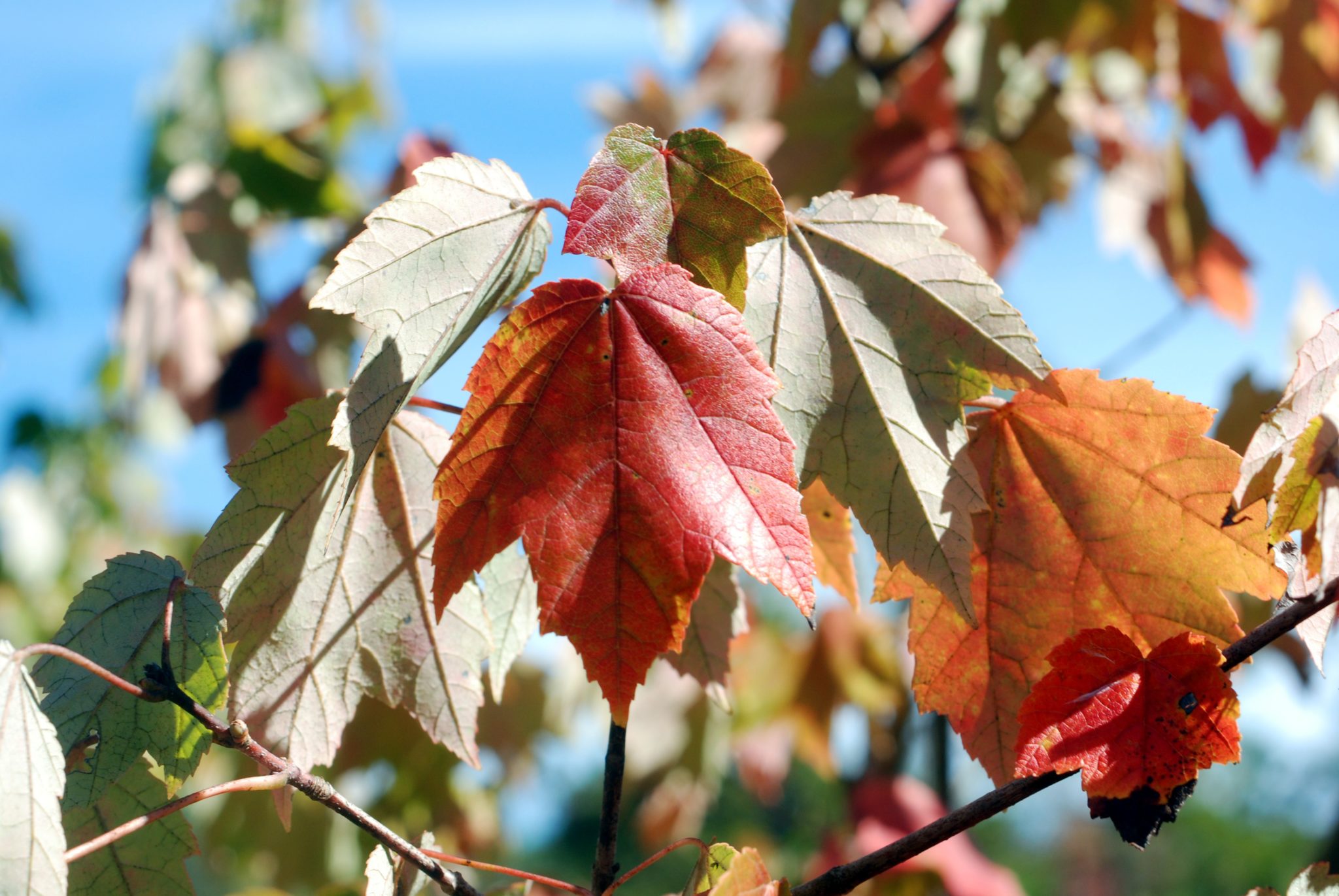The Chemistry in Fall Foliage
By Steffen Klenk
Here we are amid the fall season. This change of season provides the perfect temperatures for outdoor activities. As a photographer, I love driving up and down the Garden State Parkway, through the back roads and into Pinelands to watch the leaves change color. While many sections of the country are beginning to see cooler temperatures and gorgeous, brightly colored trees, our local vegetation remains lush and we have yet to see leaves falling in unison.
Photosynthesis plays a major role in the lifespan of a tree. Photosynthesis is an agent from which plants and other organisms gather much-needed sunlight and energy. It is also what gives these leaves a bright, green color during the spring and summer. The loss of sunlight and cooler temperatures lessen the production of photosynthesis during the fall, and causes many of the leaves to change their hue. This season, we have only witnessed a slight change to date, thanks, in part, to Mother Nature.
Our region has seen very little change this fall due to higher-than-normal temperatures. A lack of steady rainfall over the past several weeks has also played a role, According to the state Division of Parks and Forestry. Experts are predicting that the foliage will be less vivid here in South Jersey. While many leaves are nearing their peak in northern sections of the state, our region should begin to see colors changing in the next couple of weeks.
The most common tree found throughout our region is the bald cypress. Bald cypress leaves produce a distinctive bright, orange color. Sugar maple trees are also the most bountiful, providing the distinctive “leaf shape” common throughout the Northeast. Red maple trees can be found throughout the entire eastern half of the country, providing a magnificent red color.
Native to our area, especially along the beaches and islands, most trees, such as pine, hickory and holly, offer plentiful shade but lack the ability to change to bright, fall colors.
South Jersey has many wonderful places to see the fall colors. For some, it might be as close as your back yard. But the best way to see nature is up close. The Pine Barrens stretch as far north as Ocean County into sections of mainland Cape May County. Many of New Jersey’s state parks offer magnificent views of the fall colors.
If you’re up for some adventure, be sure to visit our local parks and forests, such as Wharton State Forest in nearby Hammonton. Wharton State Forest provides one of the best spots in the region to see the foliage at its peak, while visitors can spend the day hiking, fishing, or going on nature walks. You can also take a trip to Belleplain State Forest, in Woodbine. Here, you will find up to 21,000 acres of trees, including red maple, oak and cranberry. Cape May Point State Park is another great site for nature enthusiasts and photographers alike.







